Knowledge Base & Support
TOPICS
Manual Registration
The manual registration job allows you to either correct/adjust an auto registration result or create a registration manually from scratch by pairing and placing scans. The job creation is very similar to the auto registration job, with the exception that there is no cloud registration of the placements beyond some loop closing.
Job Creation
- From the Create New Job menu select Manual Registration
- Select the scans to be included on the left hand side with the checkboxes and choose ‘Add Selected’ or just press ‘Add All’ without selection, as appropriate. Then press ‘Next’.
Either imported data, a merge, or an auto registration result can be used as input.
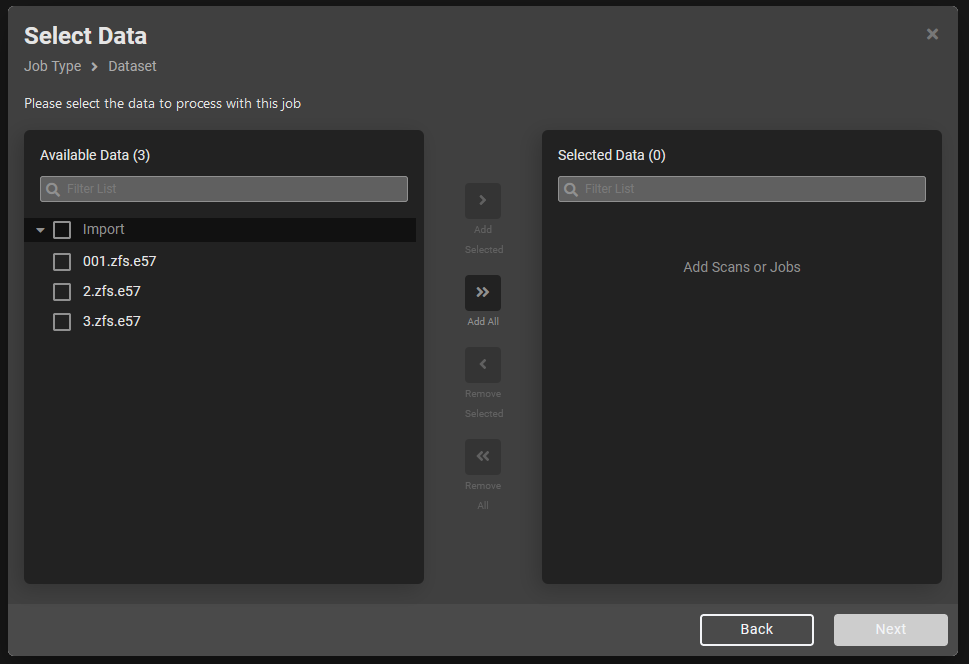
Scan Network
- Currently the registration algorithm must be given the network of scans to use for registration, with the network representing best overlap. This information is provided to the job by the user through the scan network tool during job setup. This process is easiest done by recording the rough placement of scans in the field using the Vercator App.
- The network interface has three main elements:
- Groups – for managing different layers of scans, such as floors in a building, groups can be created from the + symbol in the Groups title. Scans will be coloured by group.
- Scans – a list of the scans in the project to be placed. These get a small radial icon next to them when placed in the network plan.
- Network plan area – the canvas area on which scans are placed with a grid. This can be schematic and does not need to be spatially correct, it just needs to describe the best overlap.
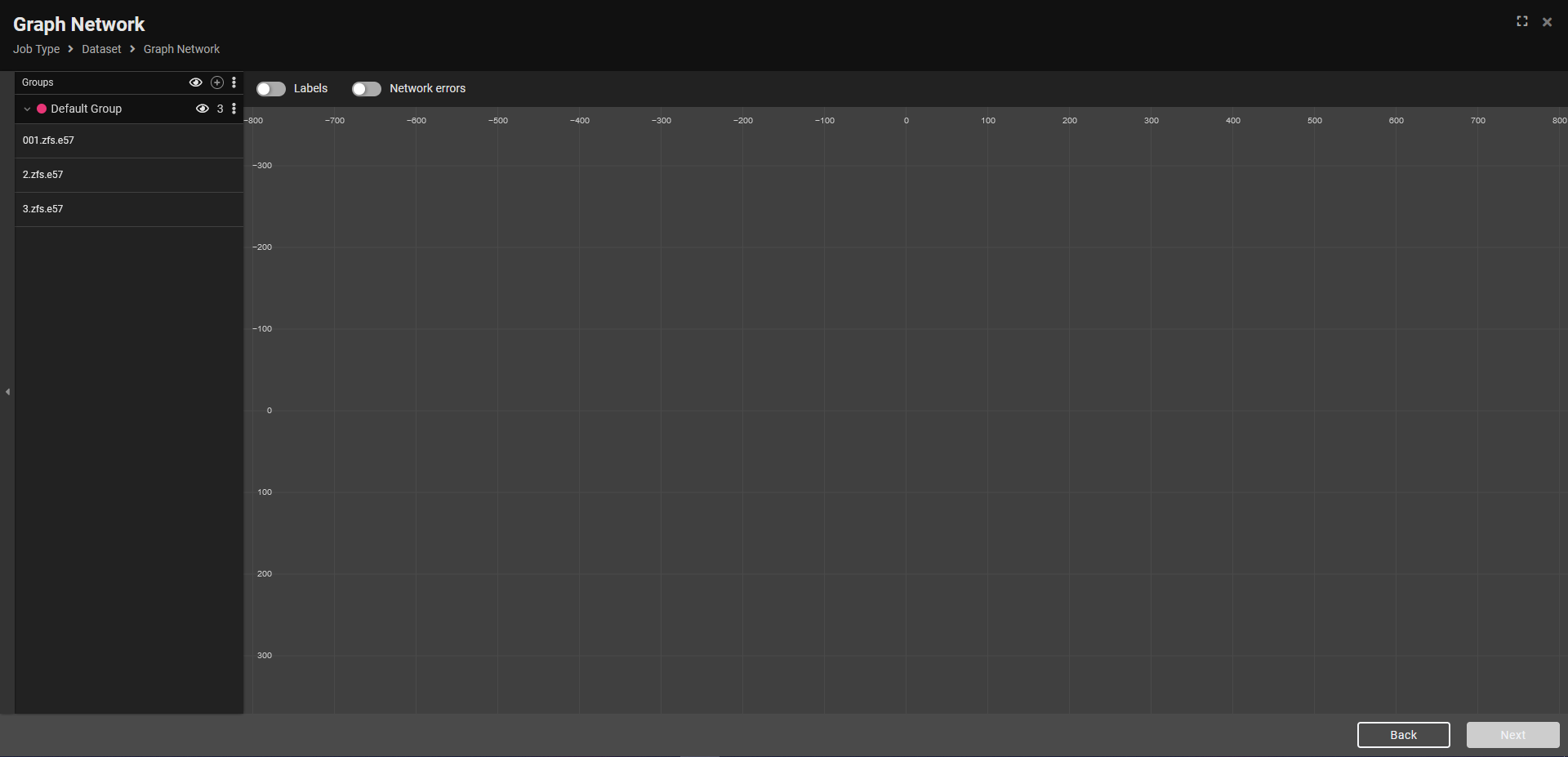
Place Scans
- In order to place scans, drag each scan from the left sidebar onto the network plan area
- Once the first scan is placed a flag icon will appear indicating the root scan, i.e. the scan from which the coordinate origin will be defined from
- Scans can be dragged between groups on the left to change between them
- To remove a scan from the plan view, select it, a radial menu will pop-up, then select the bin, then the check-mark to remove it.
Connect Scans
- All scans need to be linked to be valid and loops are allowed
- To connect scans:
- Click on a scan in the plan area and a radial menu will pop up.
- Select the link icon at the bottom of the radial.
- This will put you in link mode. Select another scan visible in the plan area to create a link.
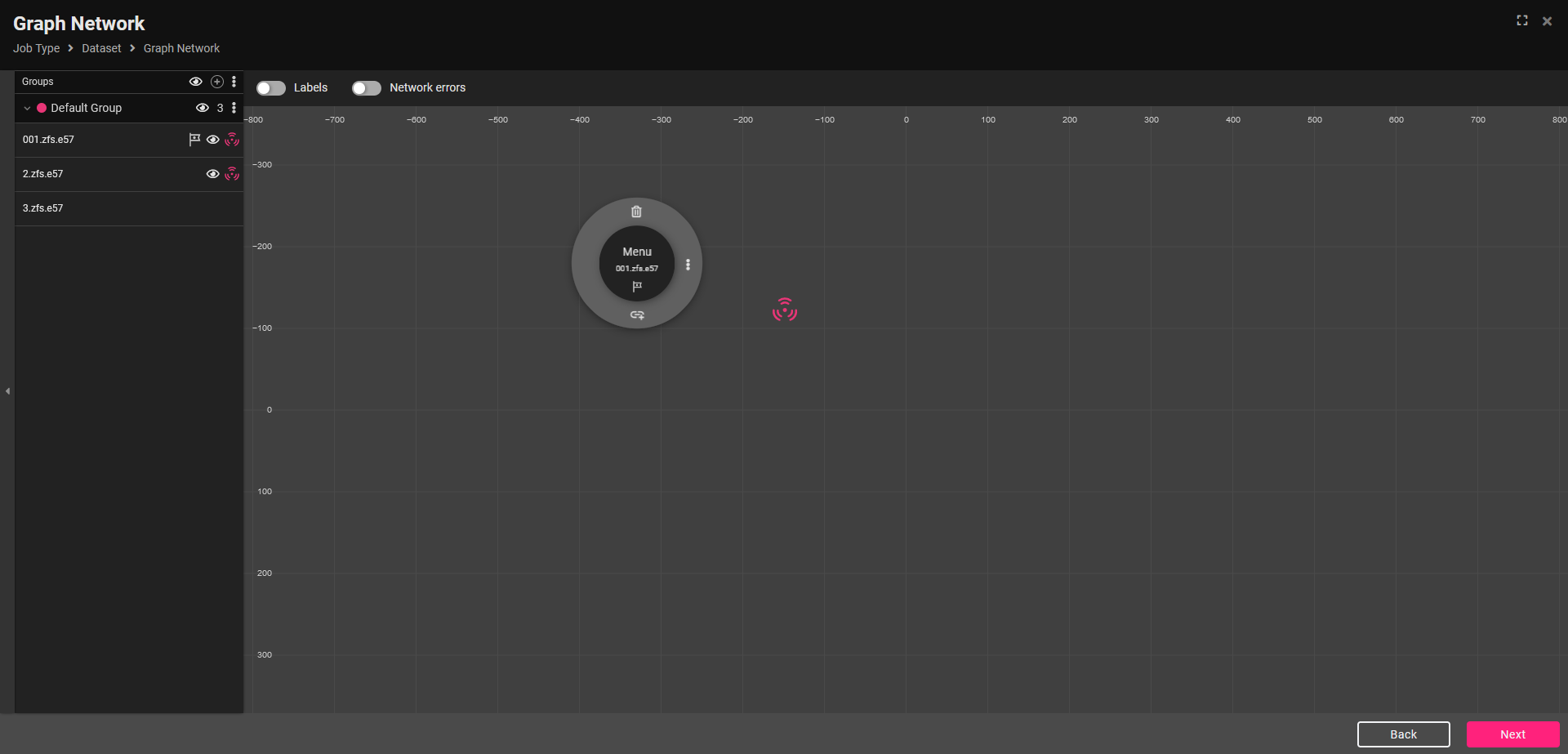
Network Errors
If ‘Network errors’ is toggled on in the top menu then the colour scheme will change to highlight any errors in the network in red.
This ensures the network is valid and contains no disconnected scans. The below image shows an example of an erroneous disconnected scan being highlighted in red:
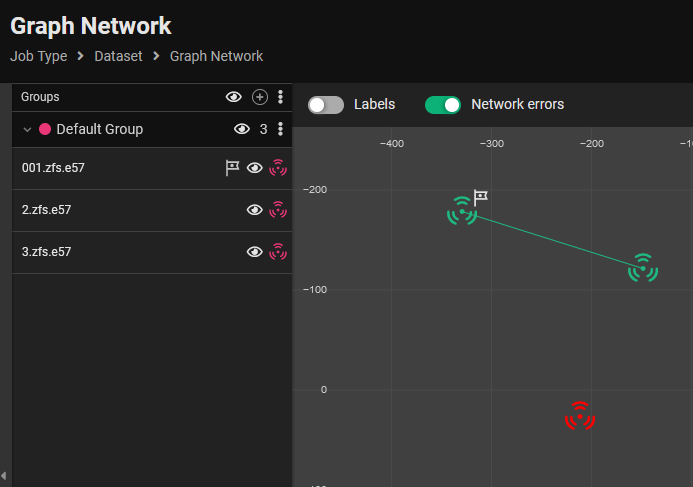
Manual Registration
Once the network has been defined, the user performs the manual registration. Vercator has two visual methods for doing this that the user can pick between when a pair of scans is selected:

Cross-section
This method allows registration using slices or cross-sections defined by the user.
This is done by the following:
- Select a pair of scans in the left sidebar
- Either use the tools in the right sidebar or right-click and drag to move the scan position of the child in relation to the parent. Use the wheel control in the right sidebar to update rotation.
- An update to one pair of scans will propagate around the network.
- Different Cross Section views can be chosen to aid with the registration in the right hand sidebar.
- When satisfied that all pairs are correct click next to view all the scans in their new positions in a global view.
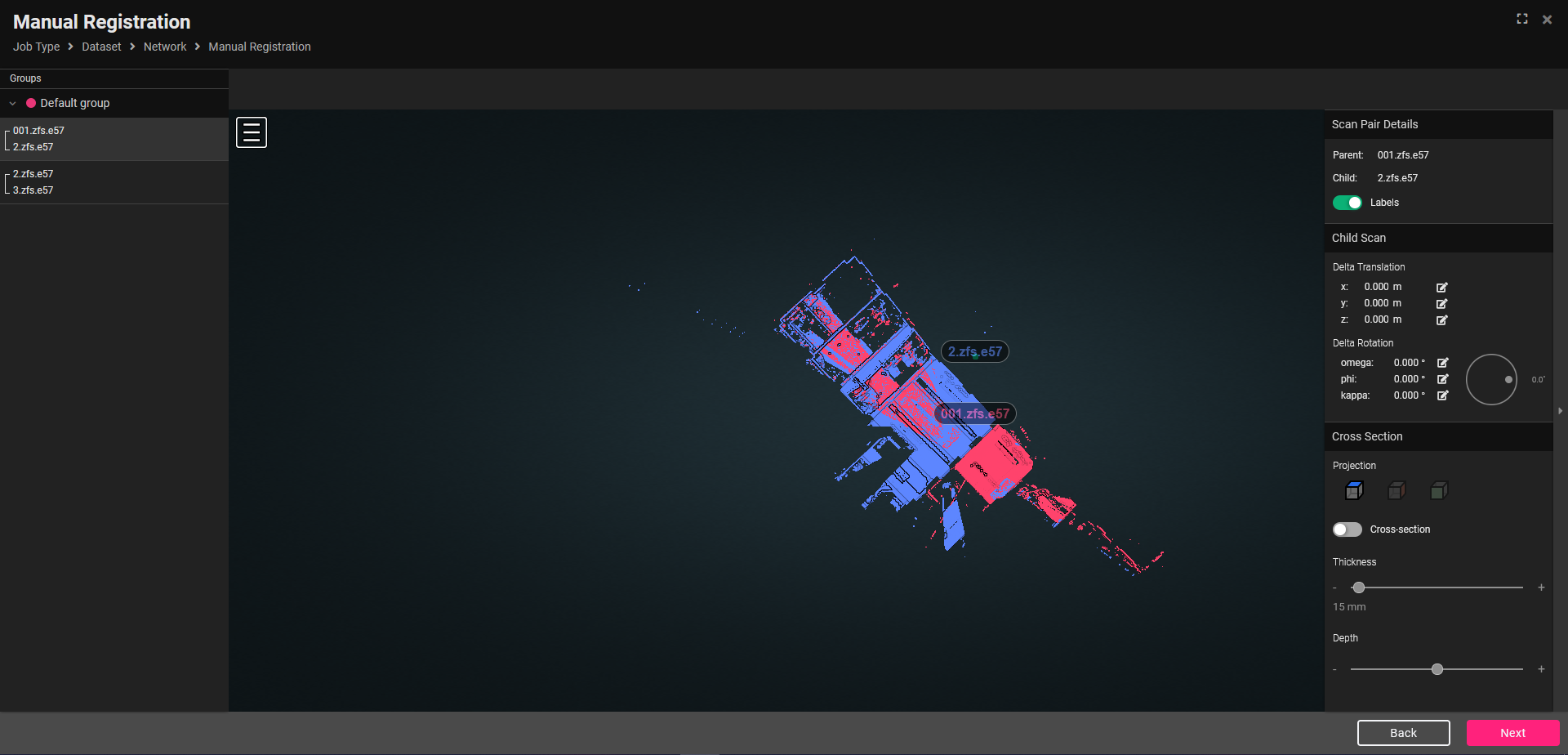
3-Point picking
This method allows the user to pick 3 matching points in each pair of scans to manually align them. This video below shows the method.
You can use the coloured targets to select three different points in both scans. Once you select one of the targets in the details bar on the right, you can place them on the point clouds by double-clicking in the scan.
![]()
When all three coloured targets have been placed in both scans, you can now click the Align button, and double-check the result in the Cross-section mode that registration worked as expected.
ℹ️ The more spread the targets are placed across a scan, the better the registration will likely be.
Global View
The global view of scans provides a final chance to view the final result of the manual registration after corrections. If this is accepted it cannot be changed unless a new Manual Registration job is created from it.
If the result looks incorrect then click ‘Back’ and go make further updates to the pairs. Otherwise, click ‘Create’ to finalise the job and return to the project.
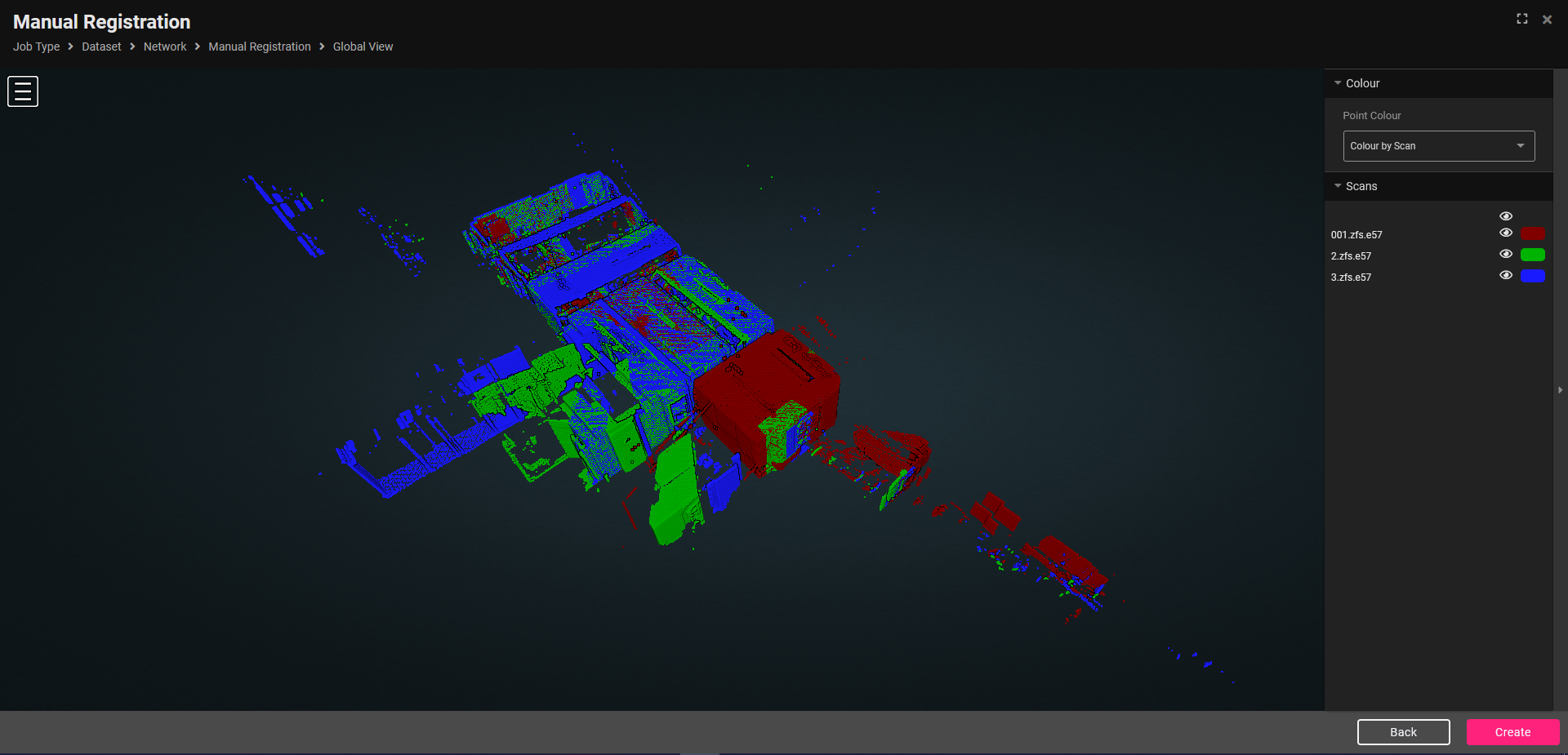
Manual Registration Quality Report
Once the job has finished a report will be calculated for QA checking. You can view a full breakdown of the statistics of the manual registration in this job report.
To access the report, choose Show registration report from the right sidebar Available Actions for the Manual Registration job.
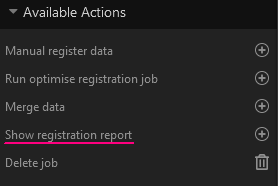
This will open the report in a new window. This report can be downloaded as a pdf, you can view a sample report here.
The report is broken down into some top level details such as overall average accuracy (RMS error) and overlap. Then a list of the scan pairs, their individual errors and overlap used for traceability and identifying problems.
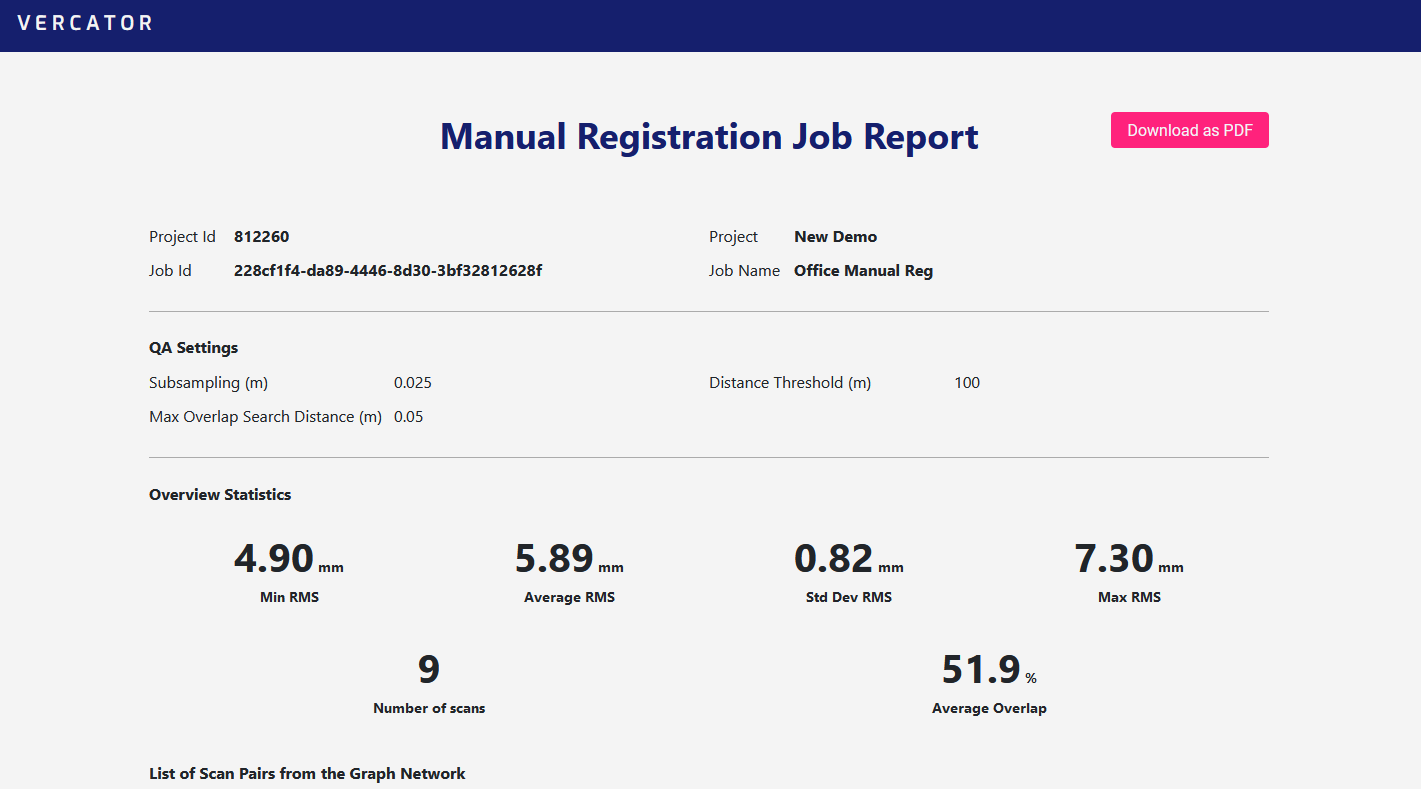
Export
The result can be exported unstructured by first running a merge or, if the data is supported, it can be exported as structured data as described here.

